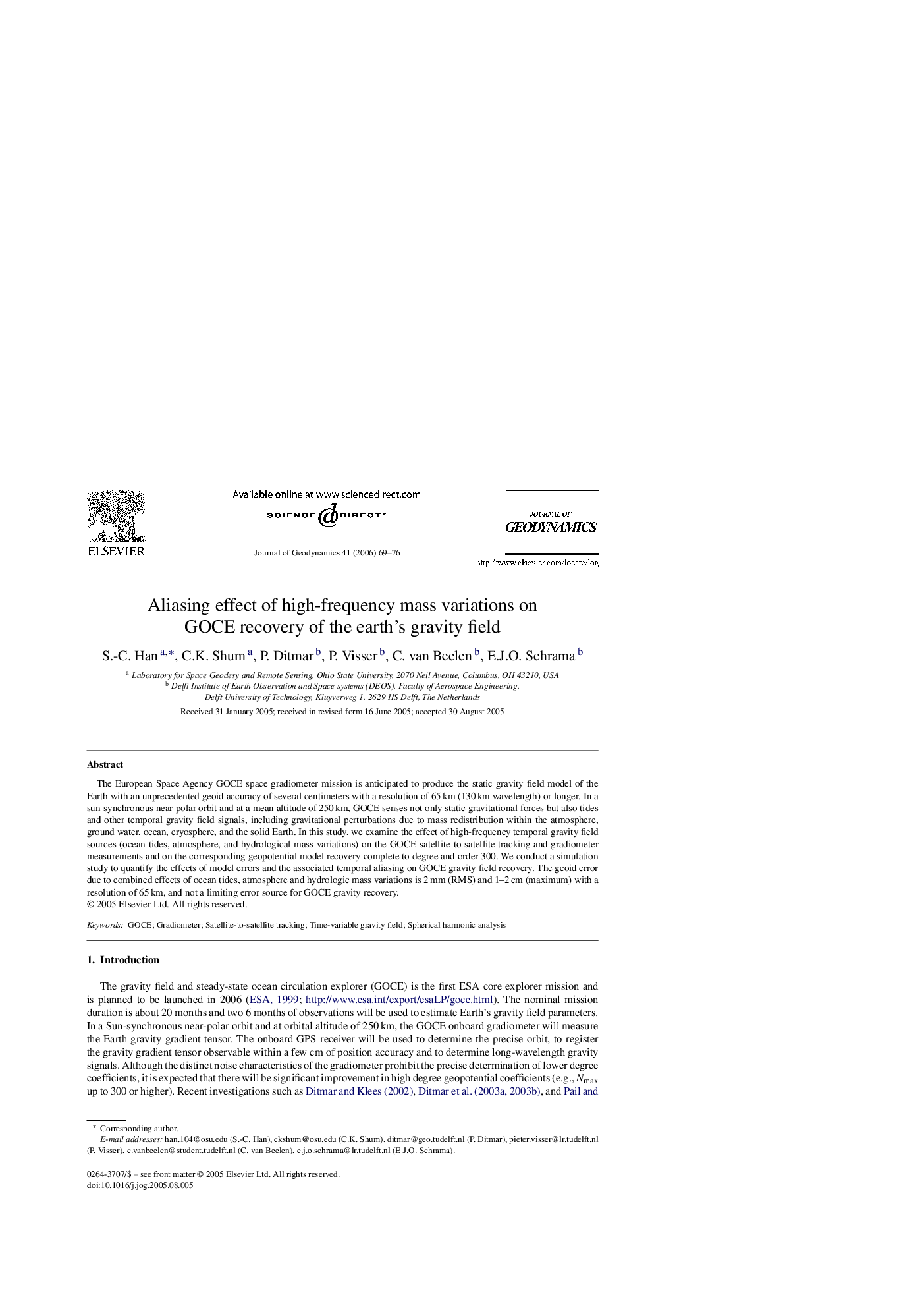| Article ID | Journal | Published Year | Pages | File Type |
|---|---|---|---|---|
| 4688849 | Journal of Geodynamics | 2006 | 8 Pages |
Abstract
The European Space Agency GOCE space gradiometer mission is anticipated to produce the static gravity field model of the Earth with an unprecedented geoid accuracy of several centimeters with a resolution of 65Â km (130Â km wavelength) or longer. In a sun-synchronous near-polar orbit and at a mean altitude of 250Â km, GOCE senses not only static gravitational forces but also tides and other temporal gravity field signals, including gravitational perturbations due to mass redistribution within the atmosphere, ground water, ocean, cryosphere, and the solid Earth. In this study, we examine the effect of high-frequency temporal gravity field sources (ocean tides, atmosphere, and hydrological mass variations) on the GOCE satellite-to-satellite tracking and gradiometer measurements and on the corresponding geopotential model recovery complete to degree and order 300. We conduct a simulation study to quantify the effects of model errors and the associated temporal aliasing on GOCE gravity field recovery. The geoid error due to combined effects of ocean tides, atmosphere and hydrologic mass variations is 2Â mm (RMS) and 1-2Â cm (maximum) with a resolution of 65Â km, and not a limiting error source for GOCE gravity recovery.
Related Topics
Physical Sciences and Engineering
Earth and Planetary Sciences
Earth-Surface Processes
Authors
S.-C. Han, C.K. Shum, P. Ditmar, P. Visser, C. van Beelen, E.J.O. Schrama,
